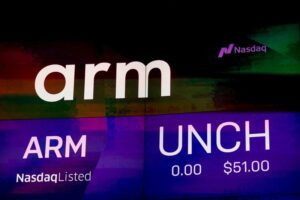1 Stock-Split AI Stock to Buy Before It Soars 260% to $10 Trillion, According to Certain Wall Street Analysts


Jim Cramer is one of the most recognizable figures in finance. Some investors may know him as the founder of Cramer Berkowitz, a hedge fund that returned 24% annually over a period of 14 years. Other investors may know him as the boisterous host of CNBC’s Mad Money, where he typically ends each show with the catchphrase: “There’s always a bull market somewhere.”
In 2021, Cramer visited Nvidia (NASDAQ: NVDA) headquarters in Silicon Valley. His conversation with visionary CEO Jensen Huang ranged from autonomous-driving technology to Omniverse, a simulation engine for training AI-powered robots. Cramer came away from the experience with a bold prediction: “This may be a $10 trillion stock.”
Interestingly, Cramer is not the only analyst to float that idea. In June, shortly before Nvidia completed a 10-for-1 stock split, Beth Kendig at the I/O Fund wrote in Forbes that Nvidia could be a $10 trillion company by 2030. Her reasons included rapid development of new AI chips, a durable economic moat arising from Compute Unified Device Architecture (CUDA), and participation in other areas of the AI economy, such as networking and software.
Nvidia is currently worth $2.76 trillion. So, if Cramer and Kendig are correct about its valuation reaching $10 trillion, the implied upside is roughly 260%. Here’s what investors should know.
Nvidia has a nearly unassailable competitive advantage in AI computing
Nvidia is a full-stack accelerated computing company best known for its graphics processing units (GPUs). Those chips speed up computationally intensive data-center workloads like scientific simulations and artificial intelligence (AI), and Nvidia dominates the market. It accounted for 98% of GPU shipments in 2023, and its market share in AI processors is estimated to exceed 80%.
One reason Nvidia has been so successful is superior chips. Its GPUs are faster than processors from other semiconductor companies. Nvidia consistently achieves record-breaking results at the MLPerf benchmarks, industry-standard tests that measure the performance of AI systems. Forrester Research recently wrote, “Without Nvidia GPUs, modern AI wouldn’t be possible.”
Another reason Nvidia has been so successful is CUDA, a vast ecosystem of software libraries and tools that streamline the development of GPU-accelerated applications across domains ranging from machine learning to computational chemistry. The breadth of the CUDA ecosystem “effectively makes Nvidia the go-to platform [for] AI developers,” according to The Wall Street Journal.
To summarize, Nvidia has the fastest AI accelerators and the most comprehensive ecosystem of supporting software. Those qualities alone afford the company a virtually unassailable economic moat, but Nvidia has further cemented its leadership in AI computing with its full-stack strategy. Its portfolio comprises adjacent data-center hardware, software, and services, which make the company a one-stop shop for AI.
The Nvidia Grace central processing unit (its first data-center CPU) is ramping toward a multibillion-dollar product line. Its InfiniBand and Ethernet networking platforms recently exceeded an annual revenue run rate of $13 billion. And its subscription software and cloud services — which simplify the development of AI applications across use cases ranging from recommender systems to autonomous robots — recently became a billion-dollar business.
Nvidia could be a $10 trillion company, but reaching that mark by 2030 is a long shot
Historically, Nvidia has unveiled new GPU architectures every two years: It announced Ampere in 2020, Hopper in 2022, and Blackwell in 2024. But CEO Jensen Huang recently told analysts the company would be on a one-year rhythm going forward, meaning Nvidia will unveil its next architecture in 2025. That acceleration should keep the company ahead of the competition as businesses invest heavily in AI infrastructure in the coming years.
Wall Street expects Nvidia to grow earnings at 34% annually over the next three to five years. That makes its current valuation of 65.5 times earnings seem reasonable. To be clear, the stock could nosedive if Nvidia fails to meet Wall Street’s expectations regarding future earnings growth. But if the company does meet those expectations, I believe the current price is justified.
Additionally, I believe Nvidia could be worth $10 trillion in the future. But I am skeptical about the 2030 timeline. For instance, assuming Nvidia trades at a more reasonable 30 times earnings at the end of the decade, the company would need to grow earnings at roughly 36% annually to achieve a $10 trillion market capitalization. That is a tall order.
Should you invest $1,000 in Nvidia right now?
Before you buy stock in Nvidia, consider this:
The Motley Fool Stock Advisor analyst team just identified what they believe are the 10 best stocks for investors to buy now… and Nvidia wasn’t one of them. The 10 stocks that made the cut could produce monster returns in the coming years.
Consider when Nvidia made this list on April 15, 2005… if you invested $1,000 at the time of our recommendation, you’d have $688,005!*
Stock Advisor provides investors with an easy-to-follow blueprint for success, including guidance on building a portfolio, regular updates from analysts, and two new stock picks each month. The Stock Advisor service has more than quadrupled the return of S&P 500 since 2002*.
*Stock Advisor returns as of July 22, 2024
Trevor Jennewine has positions in Nvidia. The Motley Fool has positions in and recommends Nvidia. The Motley Fool has a disclosure policy.
1 Stock-Split AI Stock to Buy Before It Soars 260% to $10 Trillion, According to Certain Wall Street Analysts was originally published by The Motley Fool








